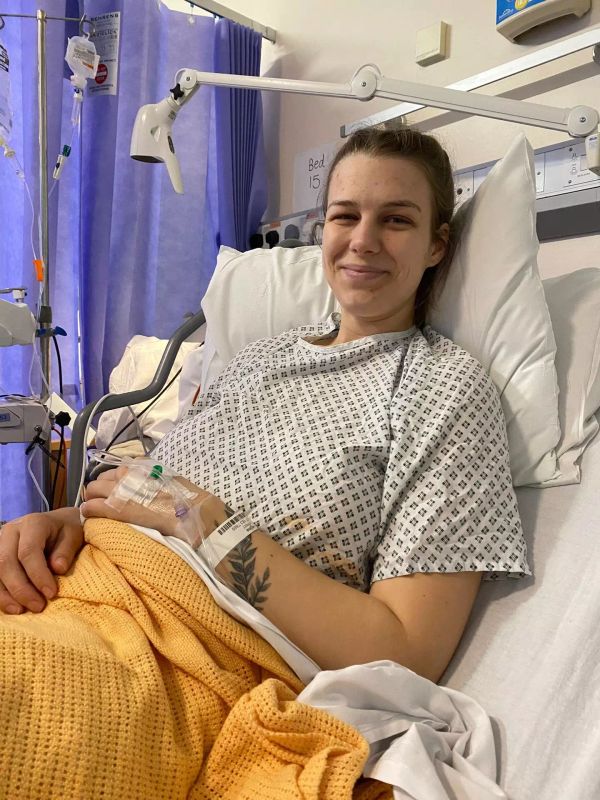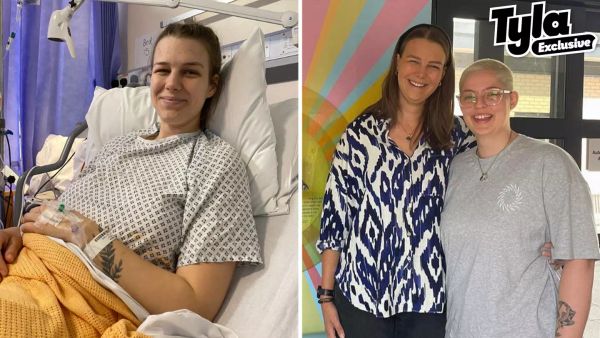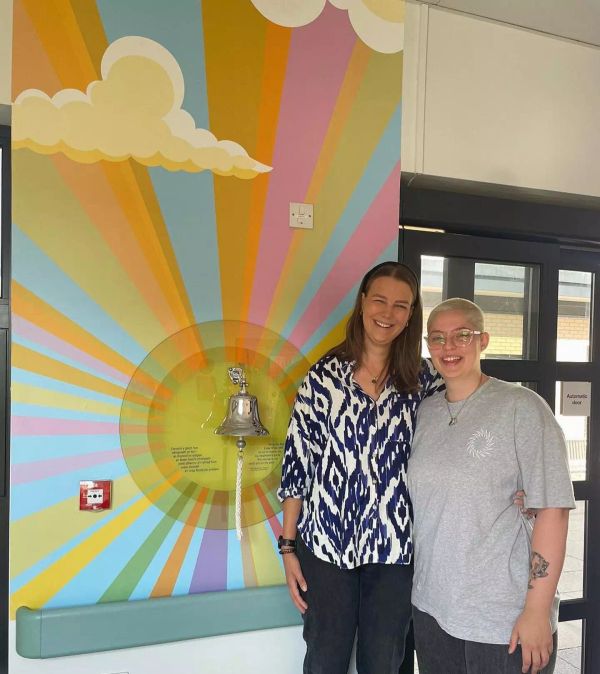
Georgina Wren was just 24 years old when she received a letter inviting her to attend her first smear test. In the UK, cervical screening usually begins at the age of 25, but many women receive an invitation up to six months before their 25th birthday. Georgina, from Cardiff, wasted no time booking her appointment and was promptly seen by a nurse at her local surgery.
Despite attending her screening at the earliest opportunity, this marked the beginning of Georgina’s cancer journey. The test revealed that a tumor had been growing on her cervix for about 18 months. It was an alarming discovery for someone so young.
“When I first went for my appointment, the nurse struggled to do the smear. She told me I might have to come back for another one, but I wasn’t worried or concerned,” recalls Georgina. However, within two weeks, she received a letter explaining that she had high-grade abnormal changes and would need to go to the hospital for further investigation.
“I was told I would have to have a colposcopy, but at this point, I still wasn’t concerned. A friend who had recently undergone the same procedure reassured me that it was straightforward,” says Georgina.
A colposcopy is a test that involves examining the cervix more closely using a microscope. Georgina also had a LLETZ procedure to remove the abnormal cells. However, during the appointment, the consultant discovered a cancerous tumor. A biopsy was done on the spot, and although the diagnosis was not yet confirmed, Georgina couldn’t help but break down in tears.
After further tests, it was confirmed that Georgina had Stage 1 cervical cancer. She faced the difficult decision of whether or not to freeze her eggs before undergoing surgery. Ultimately, surgery was deemed the best option, along with five weeks of chemotherapy and 25 sessions of radiotherapy due to signs of cancer spreading.
Georgina went through a lot of grief during this time. The loss of the life she had envisioned, the possibility of having children, and the changes to her body were all deeply challenging. “You’re grieving the life you had, the possibility of kids, the body you had, the time that you lost, freedom – everything. It doesn’t go away, you just build your life around it,” she shares.

Now 26 years old, Georgina is cancer-free and starting to regain a sense of normalcy in her life. However, she continues to face the aftermath, including early menopause and regular check-ups. Despite this, Georgina is using her experience to raise awareness and encourage more women to attend their screenings. She has now partnered with Cancer Research UK in their campaign to spread the word.
“You can’t really talk to anyone about it,” Georgina explains. “People try to understand, but they can’t really. It’s been hard for my body to adjust. But I’ve been fortunate to have good support from my doctor and access to hormone replacement therapy (HRT).”
Georgina’s story also raises questions about the screening age for cervical cancer. In the UK, the recommended age for screening was increased from 20 to 25 in 2013. The government cited reasons such as potential harm and unnecessary treatment for younger women. However, cases like Georgina’s highlight the importance of early detection and the need for further discussion on this topic.
With one-third of eligible women still not attending their cervical screenings, Georgina urgently warns others about the consequences of delaying their smear tests. “From the minute you can have your screening, you should,” Georgina advises. “There are various reasons why people don’t have it, but there are many ways the NHS can support you if you’re worried. Don’t let anything stop you—discuss your concerns with your GP.”
What Happens at Your Cervical Screening?
When you attend your cervical screening, a female nurse usually carries out the smear test. The procedure checks for the presence of the human papillomavirus (HPV), which can cause abnormal cervical cells. Here’s an overview of what to expect:
- You will be asked to remove your underwear and lie on your back with your knees drawn upwards.
- The nurse will insert a plastic instrument called a speculum into your vagina to get a clearer view of the cervix.
- Samples of cells are then taken using a soft brush.
- After the procedure, you can get dressed and go home.
- Results will usually be sent to you by post within a few weeks.
What Happens When You Get the Results?
Results typically take around two to six weeks to be processed. If you test positive for HPV, the laboratory will also examine your sample for any cell changes. If abnormalities are found, you will be invited for a colposcopy, which involves a closer examination of the cervix. If you test negative for HPV, you will be invited back for screening in three or five years, depending on your age.
Remember, early detection can save lives. Do not underestimate the importance of cervical screenings and take the necessary steps to prioritize your health.
Click here for more help, support, and information about cervical cancer from Cancer Research UK.









